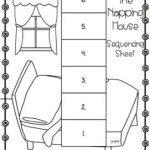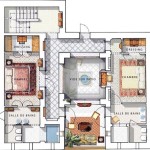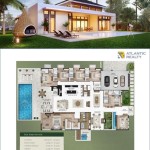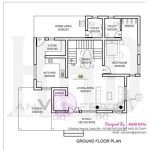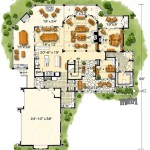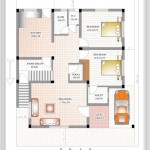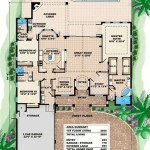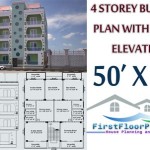Modern Post and Beam Home Plans: A Timeless Design for Contemporary Living
Post and beam construction, a building method characterized by heavy timber framing and exposed structural elements, has experienced a significant resurgence in popularity. Modern post and beam home plans offer a unique blend of traditional craftsmanship and contemporary design sensibilities. This approach focuses on maximizing open spaces, emphasizing natural light, and celebrating the inherent beauty of wood as both a structural and aesthetic component. The appeal lies in the inherent warmth, the visual drama of exposed beams, and the design flexibility the method provides.
The core concept of post and beam construction involves using vertical posts to support horizontal beams, which then carry the load of the roof and walls. This system allows for larger spans between structural supports compared to traditional stud framing, resulting in open and airy interiors. Exterior walls become largely non-load bearing, offering greater flexibility in window placement and overall design. Modern interpretations of this technique often incorporate energy-efficient technologies and materials, ensuring performance alongside stunning aesthetics.
Key Point 1: Advantages of Modern Post and Beam Construction
Modern post and beam construction presents several distinct advantages that contribute to its growing appeal. These benefits range from aesthetic qualities to structural performance and environmental considerations.
One significant advantage is the inherent aesthetic appeal. The exposed timber frame creates a visually striking interior, offering a sense of warmth and natural beauty that is difficult to replicate with other construction methods. The exposed wood can be stained, painted, or left natural, allowing homeowners to customize the look to their individual preferences. The texture and grain of the wood add depth and character to the living space, contributing to a feeling of rustic elegance.
Structurally, post and beam construction offers inherent strength and durability. The heavy timber frame is capable of withstanding significant loads, making these homes exceptionally resilient to wind, snow, and seismic activity. The long spans between supports allow for open floor plans, creating a sense of spaciousness and flow throughout the home. This design flexibility allows homeowners to customize the layout to suit their lifestyles and needs.
The open wall concept also allows for increased design flexibility. With walls not being load-bearing, expansive windows and doors can be incorporated, connecting interior spaces with the outdoors. This allows for ample natural light, which decreases energy consumption and creates a more vibrant and healthy living environment. The ability to integrate large windows also enhances the views and aesthetics of the home, especially in locations with scenic landscapes. Moreover, the open spaces are ideal for social gatherings and entertaining.
From an environmental standpoint, post and beam construction can be a sustainable choice. Timber is a renewable resource, and when sourced from responsibly managed forests, it represents a more eco-friendly building material than concrete or steel. The use of timber also sequesters carbon dioxide, helping to reduce the overall carbon footprint of the building. Modern post and beam homes can be designed to incorporate energy-efficient technologies, such as high-performance insulation, passive solar heating, and renewable energy systems, further reducing their environmental impact.
Key Point 2: Design Considerations for Modern Post and Beam Homes
Planning a modern post and beam home requires careful consideration of various design elements to ensure a successful and aesthetically pleasing outcome. These considerations encompass the selection of materials, the layout of the floor plan, and integration of necessary building systems.
The selection of timber is a crucial decision that impacts both the structural integrity and the aesthetic appeal of the home. Common wood species used for post and beam construction include Douglas fir, cedar, and pine. Each species possesses unique characteristics in terms of strength, durability, and appearance. Douglas fir is known for its strength and straight grain, while cedar is valued for its natural resistance to decay and insects. The selection of timber should be guided by local climate conditions, aesthetic preferences, and budget considerations.
The floor plan of a modern post and beam home should be designed to maximize the benefits of the open-concept design. Careful consideration should be given to the placement of the posts and beams to ensure they are both structurally sound and visually appealing. The layout should facilitate a smooth flow between different living spaces, creating a sense of spaciousness and connectivity. The incorporation of natural light is another important design consideration. Large windows and skylights should be strategically placed to maximize sunlight penetration and minimize the need for artificial lighting.
The integration of building systems, such as plumbing, electrical, and HVAC, requires careful planning in a post and beam home. These systems need to be concealed or integrated in a way that does not detract from the beauty of the exposed timber frame. Options include running wiring and plumbing within the walls or concealing them within the floor structure. HVAC systems can be designed to blend seamlessly with the architectural style of the home. Radiant floor heating is another option to consider, as it is energy-efficient and does not require unsightly ductwork.
When developing the design, it is important to consider the style and the desired aesthetic. Modern post and beam homes can range from rustic cabins to sleek, minimalist designs. The choice of materials, finishes, and furnishings should complement the architectural style and create a cohesive overall design.
Key Point 3: Cost Considerations for Modern Post and Beam Construction
Constructing a modern post and beam home involves specific cost factors that differ from traditional building methods. Understanding these cost implications is crucial for budgeting and planning purposes.
One of the primary cost drivers is the price of the timber frame itself. The cost of timber varies depending on the species, dimensions, and grade of the wood. Additionally, the complexity of the timber frame design will impact the cost. A simple frame with straight lines will be less expensive than a more intricate design with curved beams and custom joinery. The cost of labor for fabricating and erecting the timber frame is also a significant factor.
While the exterior walls are non-load bearing, they still represent a significant cost component. The choice of siding materials, such as wood, stone, or stucco, will impact the overall budget. The cost of insulation is also an important consideration, as modern post and beam homes are often designed with high-performance insulation systems to minimize energy consumption. The type of windows and doors selected will also affect the cost. Large expanses of glass can be expensive, but they can also significantly enhance the aesthetic appeal and energy efficiency of the home.
The interior finishes and fixtures will also contribute to the overall cost. The choice of flooring, cabinetry, and appliances will depend on the homeowner's preferences and budget. However, it is important to select materials and finishes that complement the architectural style of the home and create a cohesive design.
It is also essential to factor in the cost of professional services, such as architectural design, structural engineering, and construction management. These services are essential for ensuring the project is well-planned, structurally sound, and executed to a high standard. Hiring experienced professionals can also help to minimize the risk of costly mistakes and delays.
The cost of land is another important consideration. The price of land will vary depending on the location, size, and zoning regulations. It can be more expensive to build a modern post and beam home in urban or suburban areas than in rural areas. Additionally, the cost of site preparation, such as clearing, grading, and excavation, will depend on the characteristics of the land.
While modern post and beam construction may have a higher initial cost compared to traditional construction methods, it is important to consider the long-term benefits. These homes are often more energy-efficient, which can result in lower utility bills. The durability of the timber frame can also reduce maintenance costs over time. Additionally, the aesthetic appeal and unique design of a modern post and beam home can increase its resale value.
Ultimately, the cost of a modern post and beam home will depend on a variety of factors, including the size and complexity of the design, the choice of materials, and the location of the project. By carefully considering these factors and working with experienced professionals, homeowners can create a beautiful and sustainable home that will last for generations.

Modern Post And Beam Homes Logangate Timber

Habitat Post Beam

Modern Post And Beam Homes Logangate Timber

Modern Post And Beam Homes Logangate Timber

Modern Timber Frame Homes Riverbend Floor Plans

Modern Post And Beam Homes Logangate Timber

Residential Floor Plans American Post Beam Homes Modern Solutions To Traditional Living

Panorama Woodhouse The Timber Frame Company

Modern Post And Beam Homes Logangate Timber

12 Beautiful Post And Beam Homes Traditional Meets Modern Log Cabin Hub

